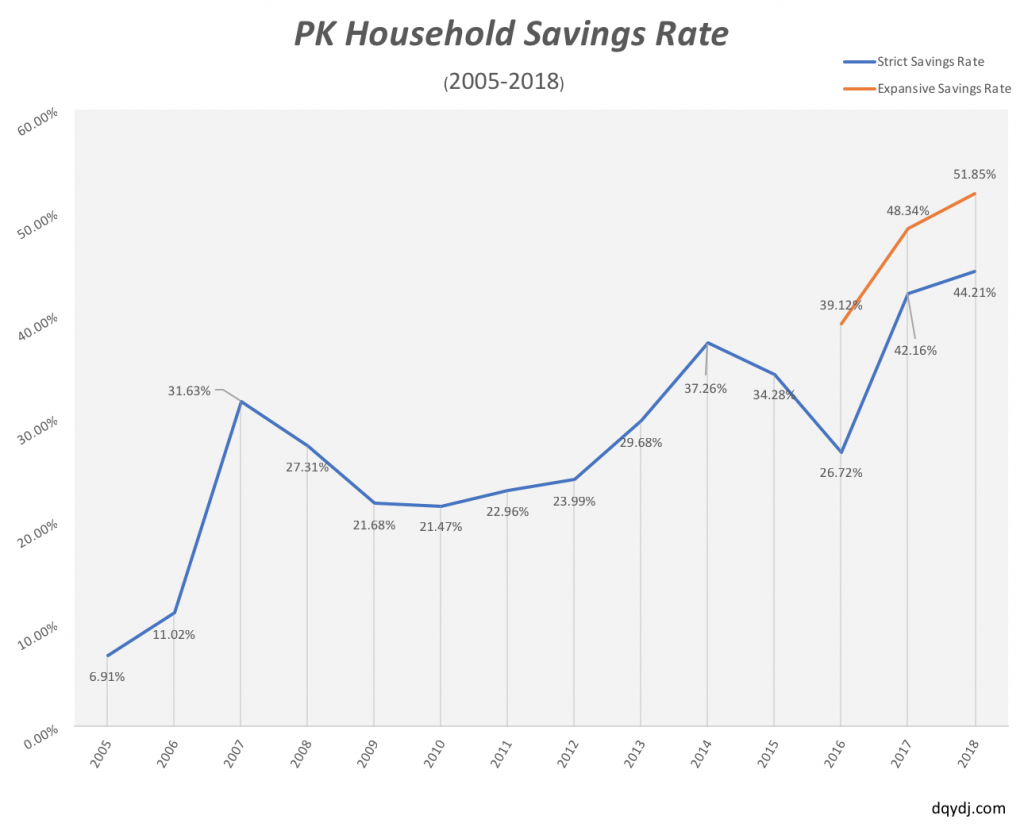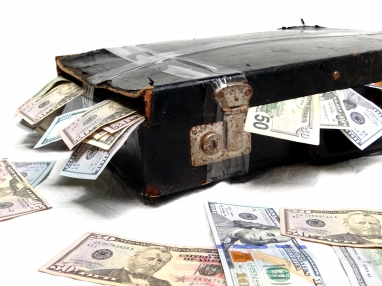
Quick: after taxes, what was your savings rate last year?
We can't blame you if you didn't answer – I mean, that's why you clicked on this post. We're going to tackle some thorny questions within:
- Why should you track your savings rate?
- Is a vague idea of your savings rate enough?
Here's the preview: an exact savings rate is overkill for most purposes, you want something more than a vague savings rate. You should calculate your savings rate within a couple percent.
Savings is Money You Aren't Spending
We usually talk about annual savings rates on this site. That number doesn't only convey our performance at setting aside funds, but it does tell you something incredibly important - how well we avoided spending.
When you break it down, once you have paid all your taxes, there are only two things you can do with money - spend it or save it.
The Spending Category
Spending is the easy one – this is where your income is going.
For our purposes, we treat income taxes as unavoidable from gross income, and optimize net savings rates - after income & payroll taxes.
The rest of the spending category is what you deemed important enough to buy during the year.
This includes necessities, like housing, clothing, food, and running water. It also includes discretionary spending - like, say, classic cars and musical instruments. It also includes some taxes like sales and property taxes. (These you can generally avoid by moving or renting. Or, at least, you can outsource them to your landlord).
The Savings Category
Savings, on the other hand, is everything else - the money added to accounts and assets or used to pay down debts.
Savings can take many forms, and likely will - Governments tend to encourage savings through incentives and special accounts which interact with the tax code in interesting ways. In the United States, that means tax advantaged accounts like IRAs, 401(k)s, 403(b)s, 529s and HSAs. It also includes various specialized one year spending accounts for things like commuting and health spending, and even includes some insurance products.
Savings can also happen in "normal" accounts - savings and checking accounts, taxable brokerage accounts and similar. Savings can be used to acquire assets as well: property and precious metals are two commonly held investments, but jewelry, stamps, classic cars, artwork and other categories (maybe baseball cards?) can probably make the cut – assuming the right expertise...
Finally, savings also includes paying down accumulated debt. If you are paying down principal on debt it is increasing your net worth, so an expansive definition of savings includes this as well.
Our savings rate calculator will guide you through savings categories.
Your Savings Rate as a Signal to You
Your post-tax savings rate is also a signal to yourself. It tells you how much income your investments can replace, and gives you a buffer to make career pivots.
Again: savings is money you aren't spending. If you track your savings rate you can gauge your freedom to do various things.
And what might those goals be?
- Retirement - if your investments, (and periodic payments from pensions, etc.) can completely replace all your income, you could retire.
- Financial Independence - having the ability to retire doesn't mean you have to retire.
- Work/Life Balance - you can work fewer hours or different days, and you can handle paycuts.
- New Career - you can shift fields, even with a pay cut.
- Education - you could afford continuing education to switch fields or positions.
- Side Business or Startup - businesses don't usually succeed in the first year. Your savings will cushion the blow to your income for working as an entrepreneur.
- Family - kids going to private school? Grandkids going to private school? Savings gives you the freedom to help another generation defray its own costs.
- More Spending - if you've been holding off on a large car purchase or something, having excess savings means you might be able to finally pull the trigger.
We built have an ideal savings rate calculator if you want to aim for the early retirment or financial independence goals. It's also useful for targeting the others.
Your Savings Rate as a Benchmark
Your savings rates can also be a benchmark versus how your peers are doing.
You, of course, should aim higher than your peers. With most things – finances included – you're best off comparing to yourself or to people who are saving more. This keeps you moving in the right direction and motivated (if you can keep the jealous feelings away from the latter).
Do not benchmark yourself against the aggregate savings rate. For the US, that will give an inappropriately low level of savings. Remember: the savings rate includes people in other stages of life, with different situations. They may be retired, or very young.
Always aim to compare like with like.
Definitely Track Your Savings Rate

Those are the three broad reasons to track your savings:
- As a check on your spending
- To serve as a signal to yourself
- To benchmark against reasonable models and goals
Surely, we missed a number of other smaller reasons and motivations. However, these are the three main ones.
Even if you aren't aiming for extremely early retirement or quick financial independence, it's best to save as much as possible to protect yourself from financial shocks. Only by knowing how much you're saving can you know for sure how much of a shock you could weather.
So, figure out your rate. Work to improve it. You'll be extremely happy you did.

